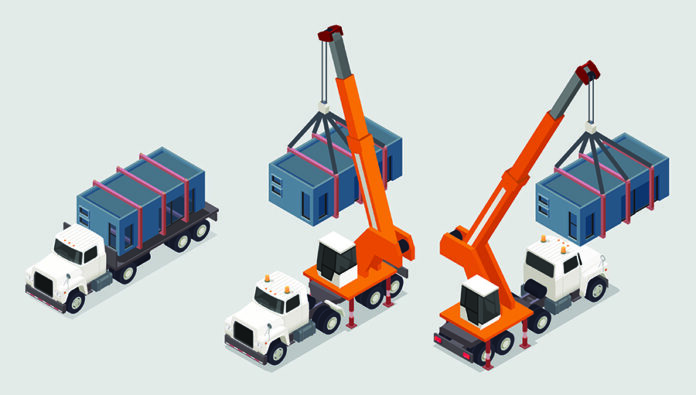A developer needs 200 homes in the Boston, Mass. area. A builder needs 150 in West Virginia, a developer needs 300 condos in Dallas, Texas, and the list goes on. The extent of prefabrication used in these projects is usually limited to wall panels and trusses; they’re what’s available.
The current modular home factory network can never seem to add these homes to their current production within the time frame needed without abandoning their established customer base. And, if a modular factory does attempt to increase its output, the distance from the factory gate to the builder/developers’ jobsite is usually a couple of hundred miles away, at least. That means high transport costs, as well as lots of modules stacked up in the factory’s yard, waiting for carriers and truck drivers.
Now imagine an empty warehouse with tall and wide overhead doors being turned into a temporary modular home factory. It builds out a couple of specific projects that are an hour or two away, at most. When these projects are done, it’s turned back into a warehouse and rented to someone else.
This is not a pipe dream. Pop-up factories are already being discussed in dark corners of the construction world.
A pop-up factory consists of a short assembly line with several portable overhead cranes. To make modules, it uses panelized walls, floors and trusses from an outside supplier. It uses subcontractors for the framing, plumbing, HVAC, electrical and set crews. Finish work and quality assurance are usually done by the factory’s employees. The cranes, trucks and carriers are leased.
The operation is dedicated to just one or two, small or medium-sized projects over a short period of time. Most of these projects would occur close to the top 10 metro markets, where the extra cost of factory construction would be offset somewhat by the lower cost of transport.
This a logical next step for our industry. Many modular factories already have decentralized engineering, marketing and sales departments, but still have a central factory. What if a company used decentralized factories? Factories that could be ready for production within 30-90 days and relocated in 30 days to another empty warehouse in another city?
The factory would be designed for small-batch production; according to the people I’ve talked with, the sweet spot appears to be 600–2,000 modules. It would be capable of producing two to four modules a day, in an eight-hour day. Costs would be less than that of a full work force in a central location delivering homes to jobsites eight or 10 hours away.
One company. No permanent factories. Job specific. Sounds like science fiction? Well, it’s already in the planning stages, folks.

















